10 Product Description Examples for Inspiration in 2025
Interested in seeing some product description examples for online stores for inspiration?
As 82% of consumers believe product descriptions are one of the most influential elements of their shopping experience, we can’t afford to have generic descriptions.
In this article, we’ll provide ten actionable examples of product descriptions that you can implement in your e-commerce store to boost your conversion rates.
TL;DR
- Product descriptions are important because they are what your shoppers read after landing on your product pages. They are used to educate and persuade shoppers.
- These descriptions are used differently, as different industries require different approaches.
- For example, technical products include concise (yet long) descriptions fitted above the fold, while fashion products make product descriptions story-driven.
- Retailers can utilize AI tools to optimize their product pages further and improve their store’s conversion rates.
Why Do Product Descriptions Matter For Online Stores in 2025?
Product descriptions matter because they are what your customers read after opening your product pages.
Your product descriptions need to:
- Educate your readers about your product so they can better decide if it’s the right fit for their needs.
- Persuade your readers to convert by showcasing its benefits and what makes it unique.
Descriptions outline the reason(s) why your customers need to buy that particular product and from your specific brand.
💡 Data from Statista showcases that 36% of shoppers believe their experience could be improved with better product descriptions.
Product Description Examples for E-Commerce in 2024
There are different ways of writing product description copy, as best practices vary from industry to industry, such as:
- Concise descriptions that showcase features.
- Persuasive descriptions that go over customers’ pain points or benefits.
- SEO-driven descriptions that include keywords to rank on Google.
- Visual descriptions that include imagery, videos, and carousels.
- Etc.
In this section, we’ll review examples of products from online stores that are getting good results from their descriptions.
Example 1: Personalized Questions in the Product Description
When people land on your product pages, they have different questions.
Marketers study these questions and try to answer the most commonly asked questions in the product descriptions to convert visitors better.
But what if you could personalize the questions on your product pages to each of your shoppers and remove the guesswork?
Product descriptions should not be the same for each shopper. They can be personalized.
With Big Sur AI (our tool), you can set up conversion-optimized AI prompts on your product and category pages.
AI technology considers the customer journey, consumer behavior, and preferences to personalize the questions they receive on your pages.
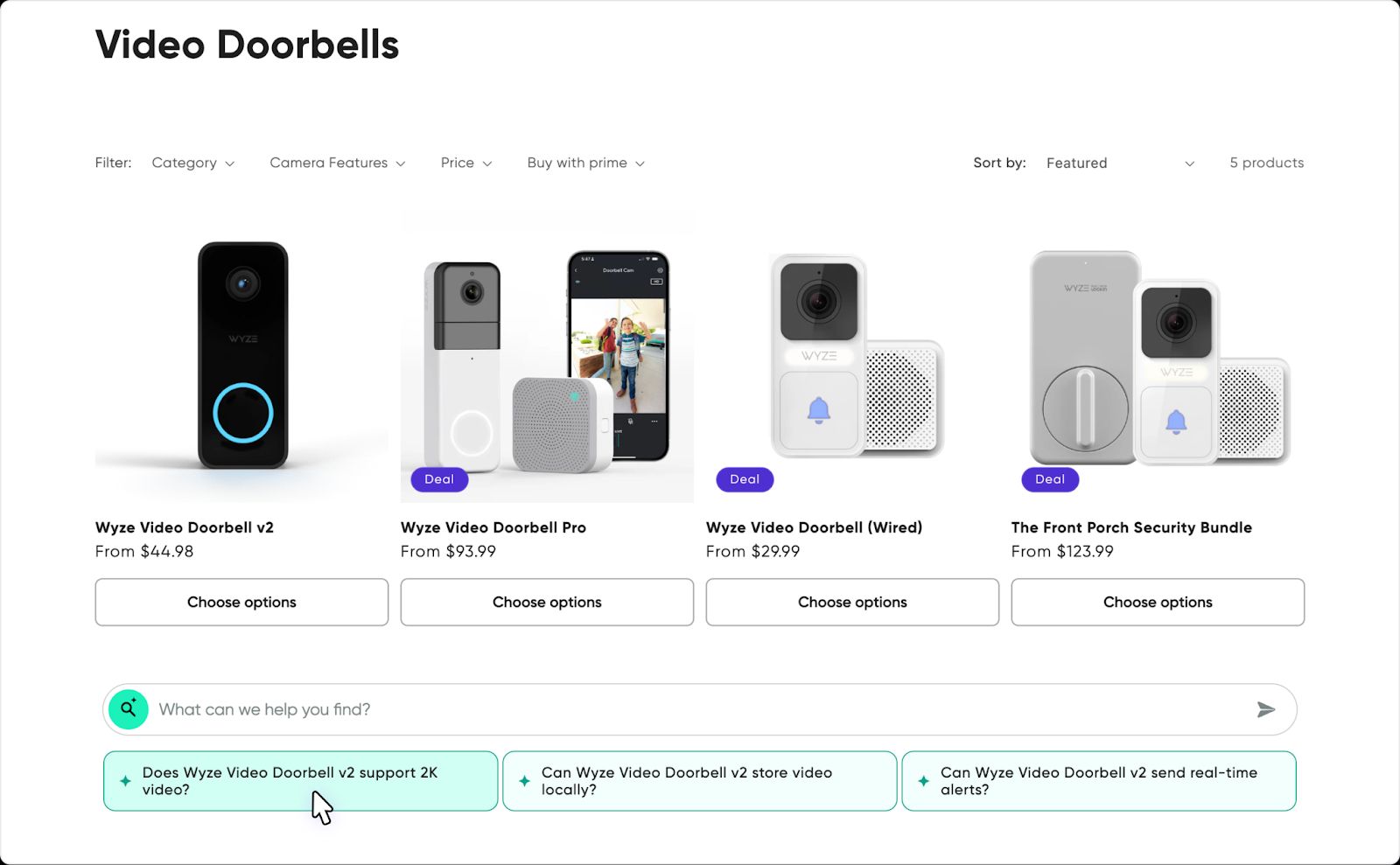
Wyze Utilizes Big Sur AI’s Conversion-Optimized Prompts To Personalize The Product Descriptions
Wyze has optimized its product pages with personalized questions tailored to each shopper.
Our tool analyzes how each consumer engages with their store.
Then, it predicts which questions they will likely ask and suggests them throughout their shopping experience.
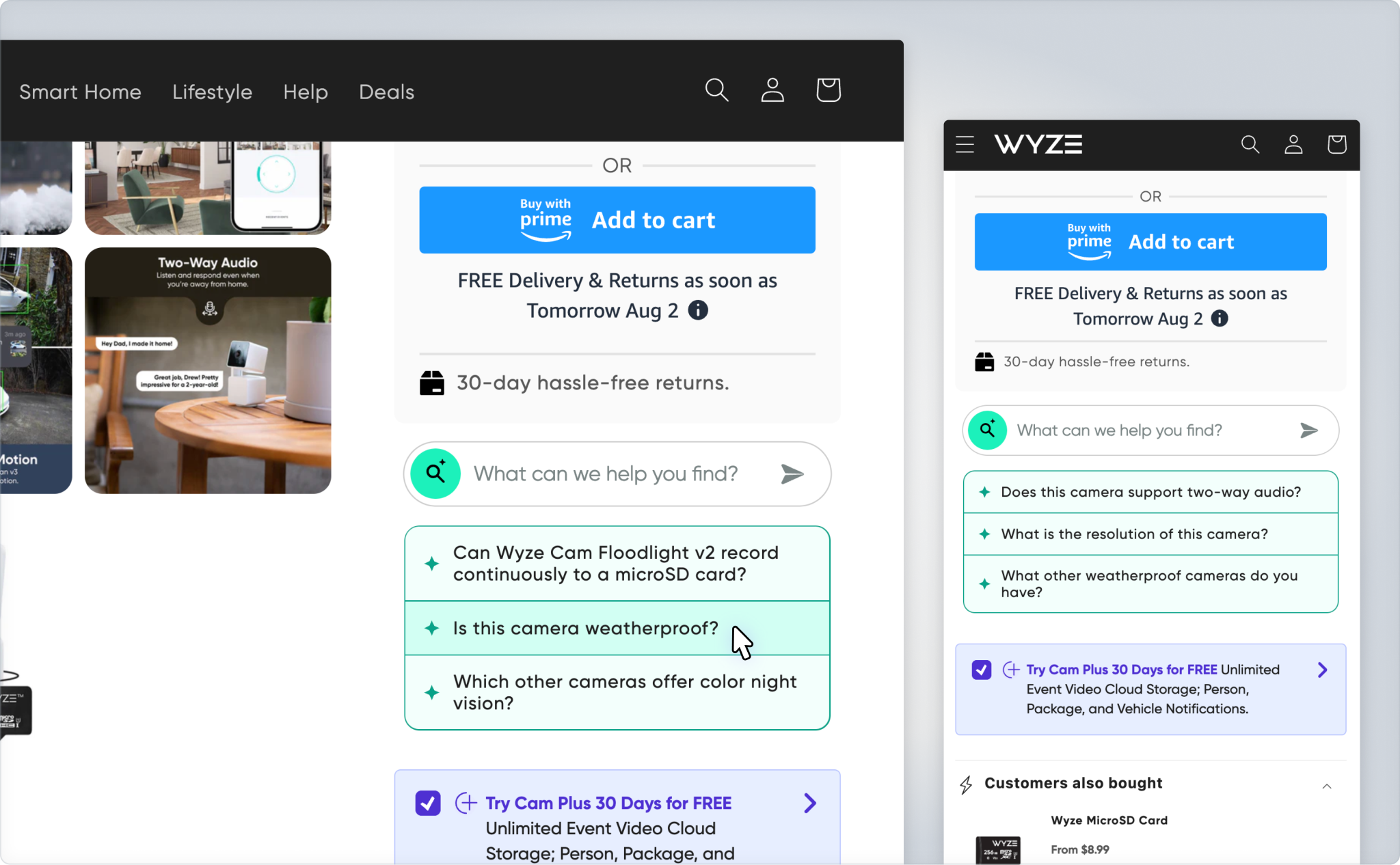
After the users click on the questions, they are taken to a conversational experience, where our AI assistant, powered by Generative AI, answers their questions in-depth.
The shopping assistant operates 24/7 and can answer complex questions about your products, as it has been fed all your store’s product information.
Here’s an example from another retailer, Rad Power Bikes ⤵️
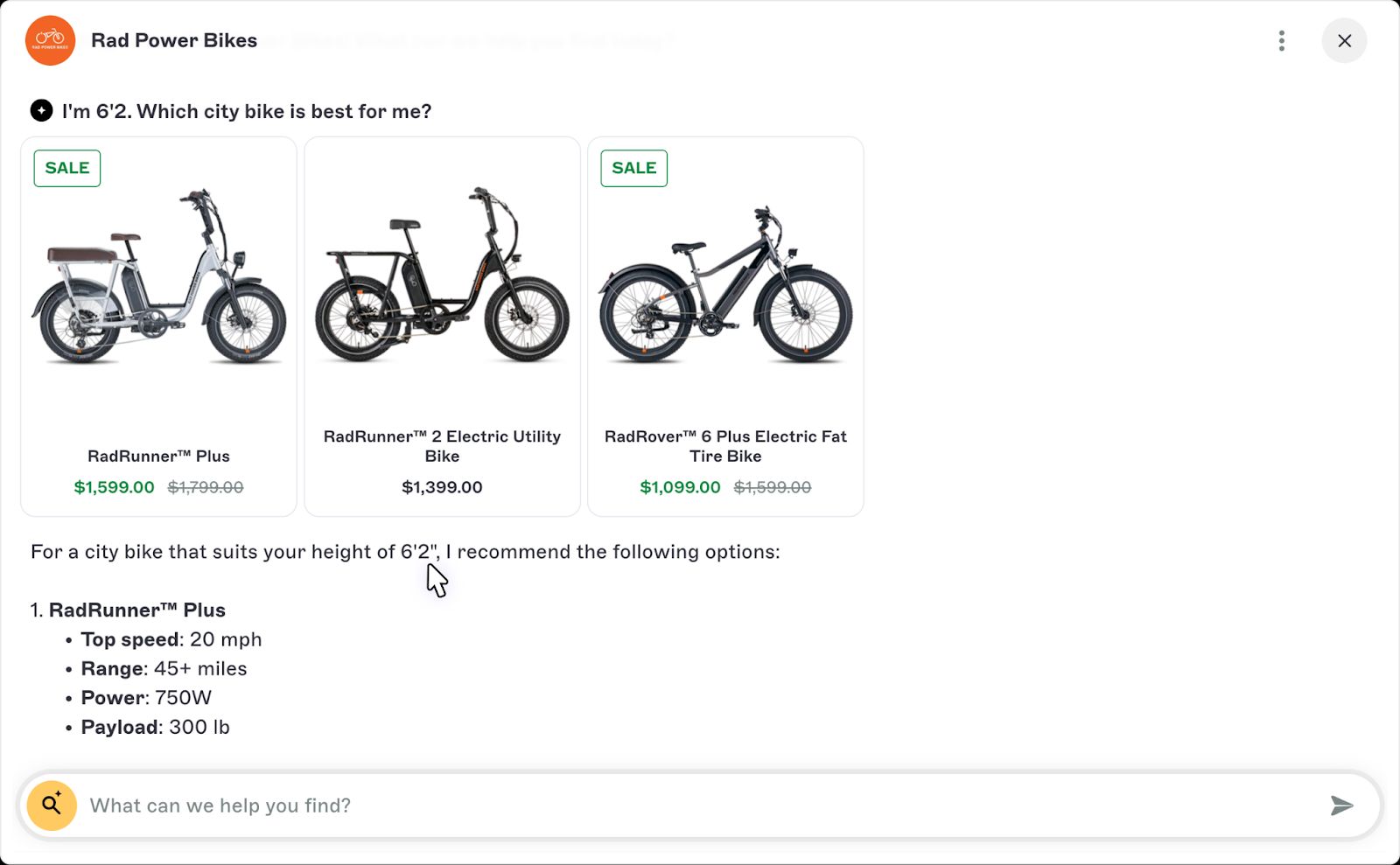
Instead of answering static questions that are commonly asked about the product, Big Sur AI enables online stores to provide personalized questions based on user intent.
The tool's goal is to alleviate shoppers' hesitations before purchasing by better educating them about the product.
Here’s the tool in action ⤵️
These suggested questions are embedded on your product and category pages and are personalized for every customer on your website.
💡This means different shoppers would see different questions crafted to maximize the likelihood of purchasing.

Brands like Wyze also get insights into the conversion rates of each question their customers ask that leads to a conversion.
This helps their marketing team identify the crucial pre-purchase questions interested customers ask.
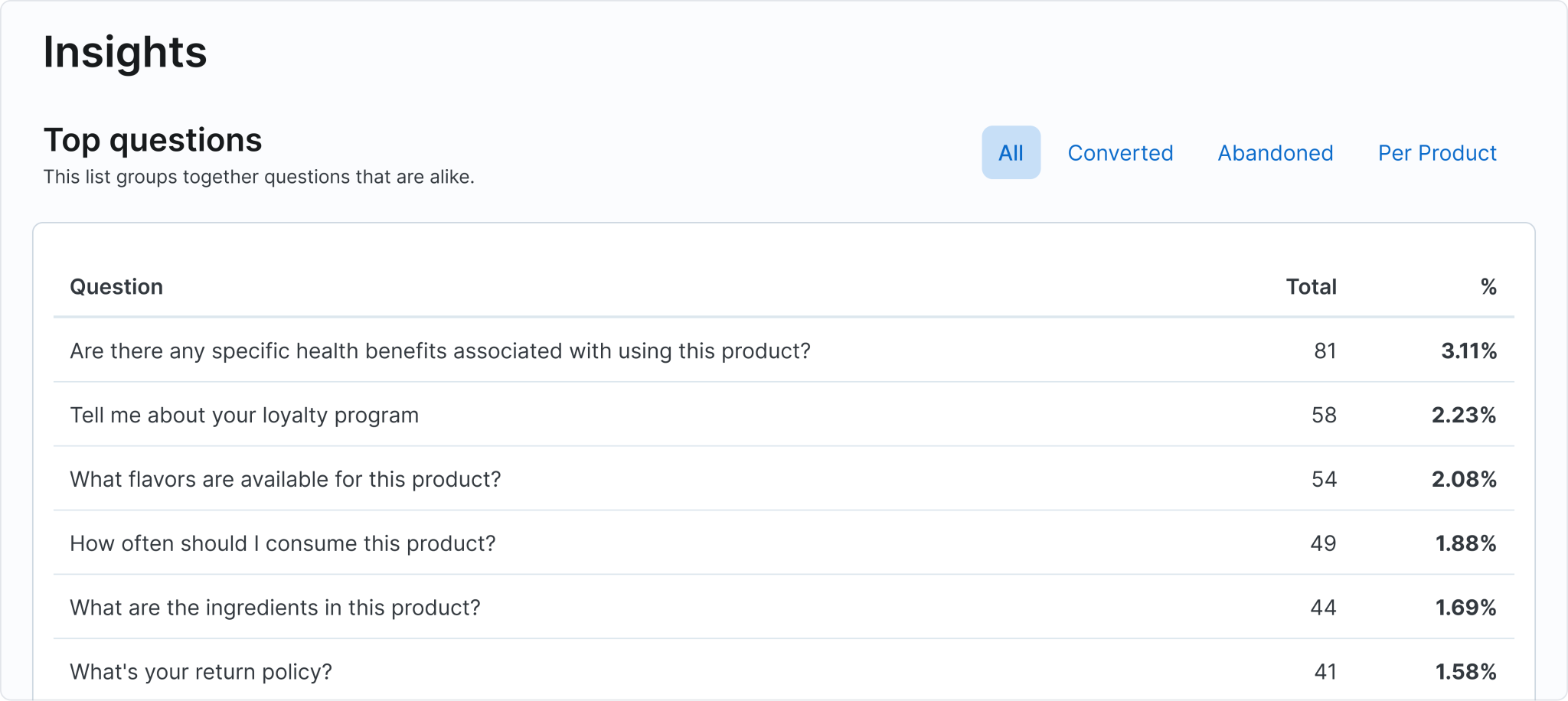
Results: Customers who interact with Big Sur AI’s Sales Agent convert at four times the rate of the average store user.

Example 2: Short & Concise Descriptions
One of the best ways to approach a product description is to make it concise.
You want to write:
- A captivating one-liner at the beginning.
- Summary of the product and its features.
- Benefit-driven list.
- The size, flavor, quantity, etc.
This lets you engage your audience and convey your item’s unique selling points.
Muscle Feast’s Products Have Short But Powerful Descriptions
Muscle Feast’s product descriptions feature the fitness products’ key benefits while addressing the health concerns of shoppers.
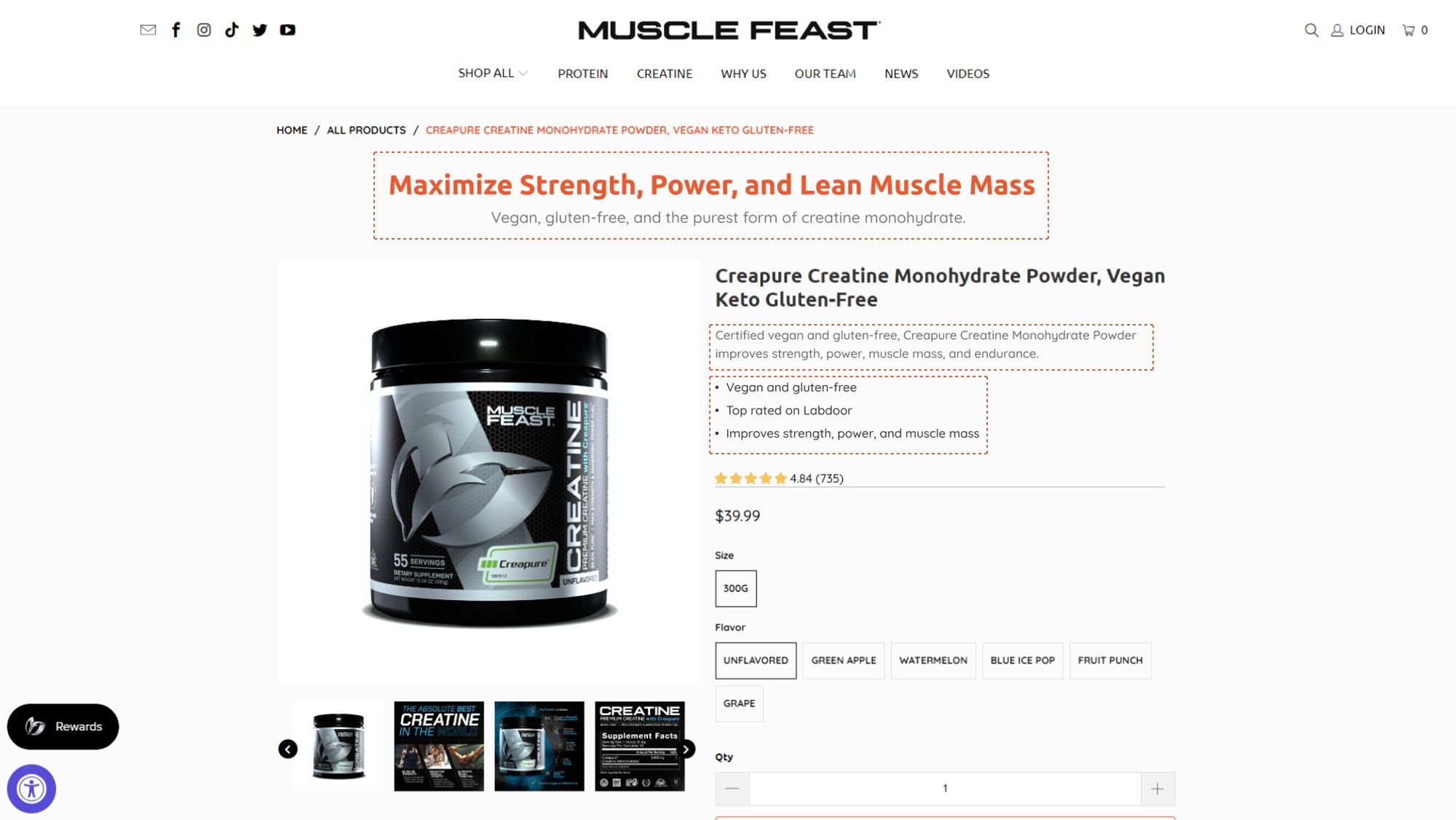
The brand uses short sentences and a benefit-driven approach to writing descriptions.
Three bullet points cover their unique selling propositions:
- Vegan and gluten-free.
- Top rated on Labdoor.
- Improves strength, power, and muscle mass.
The company knew its shoppers were just skimming through their product descriptions, mostly focusing on the above-the-fold text.
Software: To scale it across all its product pages, Muscle Feast utilized OptiMonk’s AI capabilities to write the copy for all product pages.
Results: The brand increased its revenue by 15% after using the new product description template across its online store.
Example 3: Story-Driven Descriptions
Story-driven descriptions are a powerful way to explain what your product is about.
People love stories; they help them better connect with a brand and make your product descriptions stand out.
This lets you tap into your customers' emotions and enables your product to become more memorable.
It can be a story about the product or your brand.
Here are examples of approaching stories:
- How the product was manufactured.
- The real purpose of the product.
- Your brand’s values and commitment to quality.
- The challenges you overcame to create the product to be this good.
To’ak Sells Their Premium Chocolate With a Story-Driven Approach
To’ak sells luxury chocolate through stories.
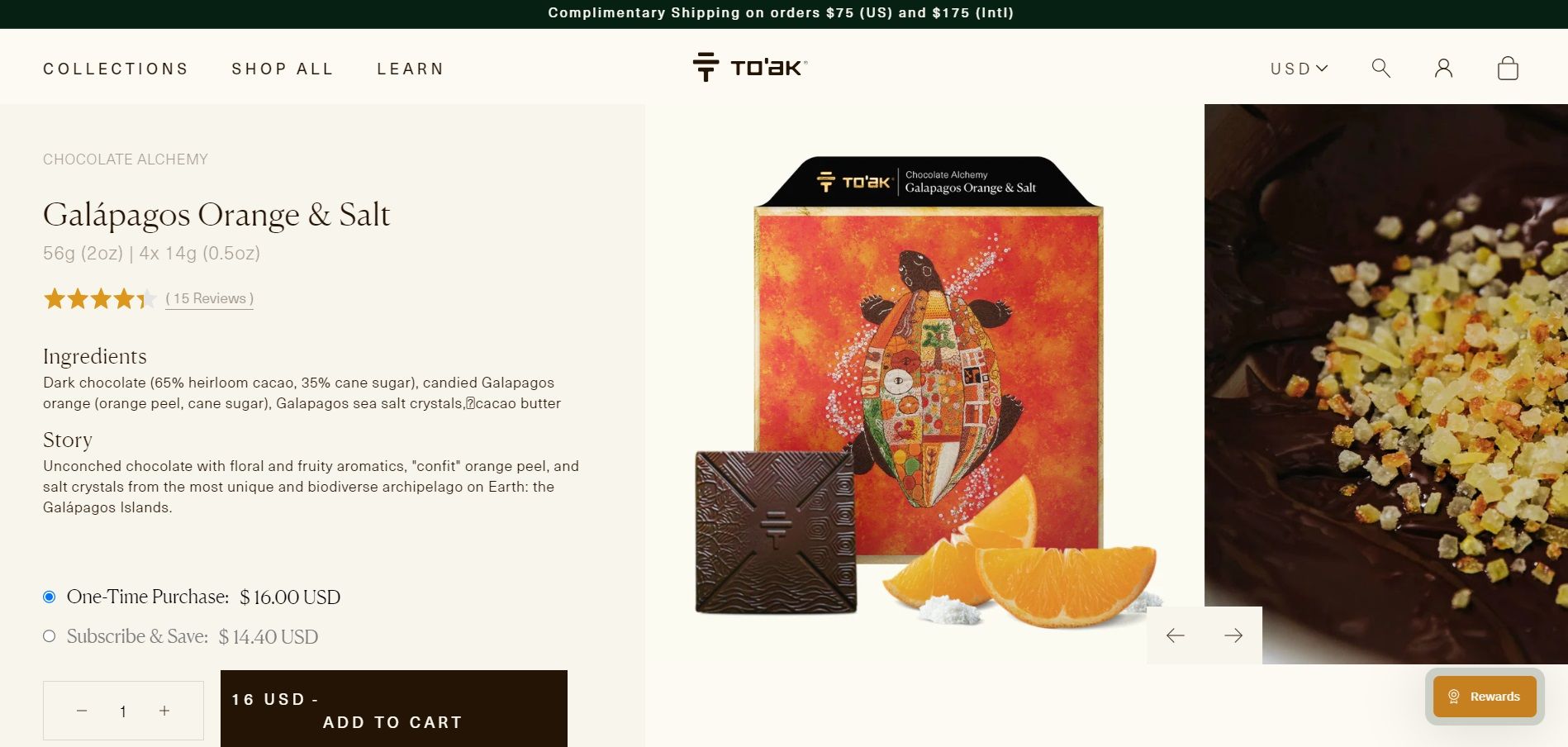
The brand goes over how it was created, where, and what products were used in the creation process.
This approach works particularly well when selling higher-priced goods like luxury chocolate or expensive wine.
If connoisseurs are your target audience, they will likely appreciate a good story.
To’ak goes into deeper detail about the cacao farmers and how they know them.
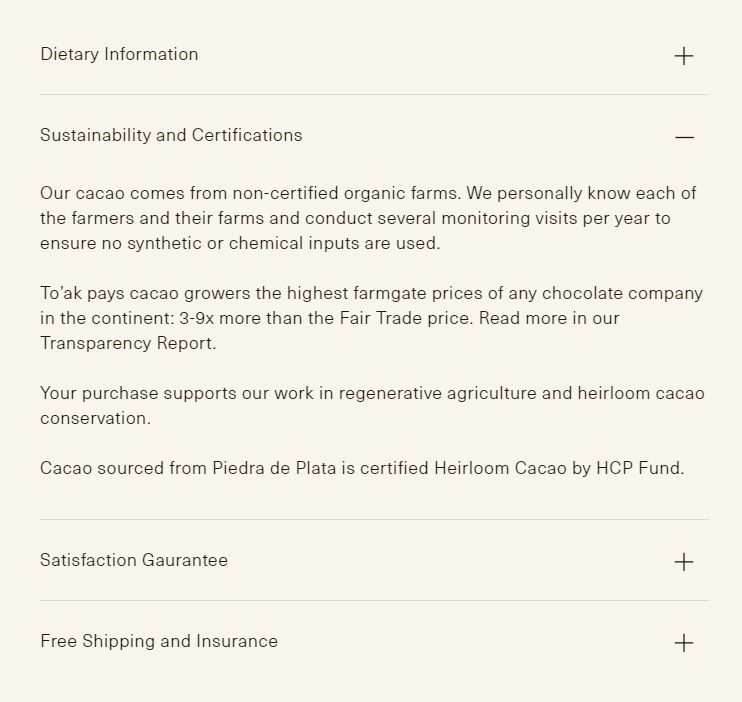
Example 4: Make Them Laugh - Humor-Based Description
You can add humor to your product descriptions to help your copy stand out.
This is particularly useful in the fashion industry, where you can stand out from your competitors by making your shoppers laugh.
But why would humor work? Because it’s humane and conversational.
Customers are tired of corporate and robotic talk.
Fun and punchy descriptions would make your brand more human in the minds of your shoppers and enable them to relate to you.
Chubbies Uses Humoristic & Conversational Descriptions
Chubbies is a fashion retailer that would rather have playful and funny descriptions than dull and boring ones that discuss product materials.
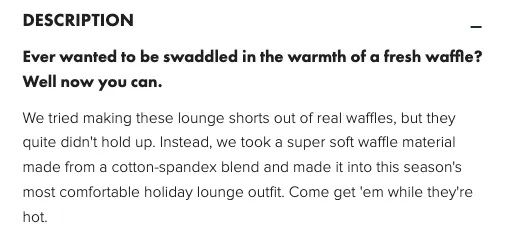
Another way the brand approaches product descriptions is by making them conversational as if a shopping assistant (who is your buddy) explained them to you.

As your shoppers have hesitations and back thoughts, you can ease their stress by making them smile slightly.
Chubbies has doubled down on its humor-based conversational marketing by starting a newsletter called ‘’Chubster Nation’’ with over a million subscribers.
Example 5: Make it Visual
You can improve your product descriptions by making them visual.
The human brain absorbs visual content quickly, processing visual information more rapidly than text.
Data shows that 65% of people are visual learners and can retain information better when presented visually than in text.
You can make your descriptions more visual with:
- Images that showcase your product in use.
- Infographics of the benefits and features.
- Videos of people using the product.
- Emojis to make reading easier.
Califia Farms Utilizes Visual Descriptions To Sell Their Vegan Products
Califia Farms is an online retailer that does not believe in long and boring product descriptions.
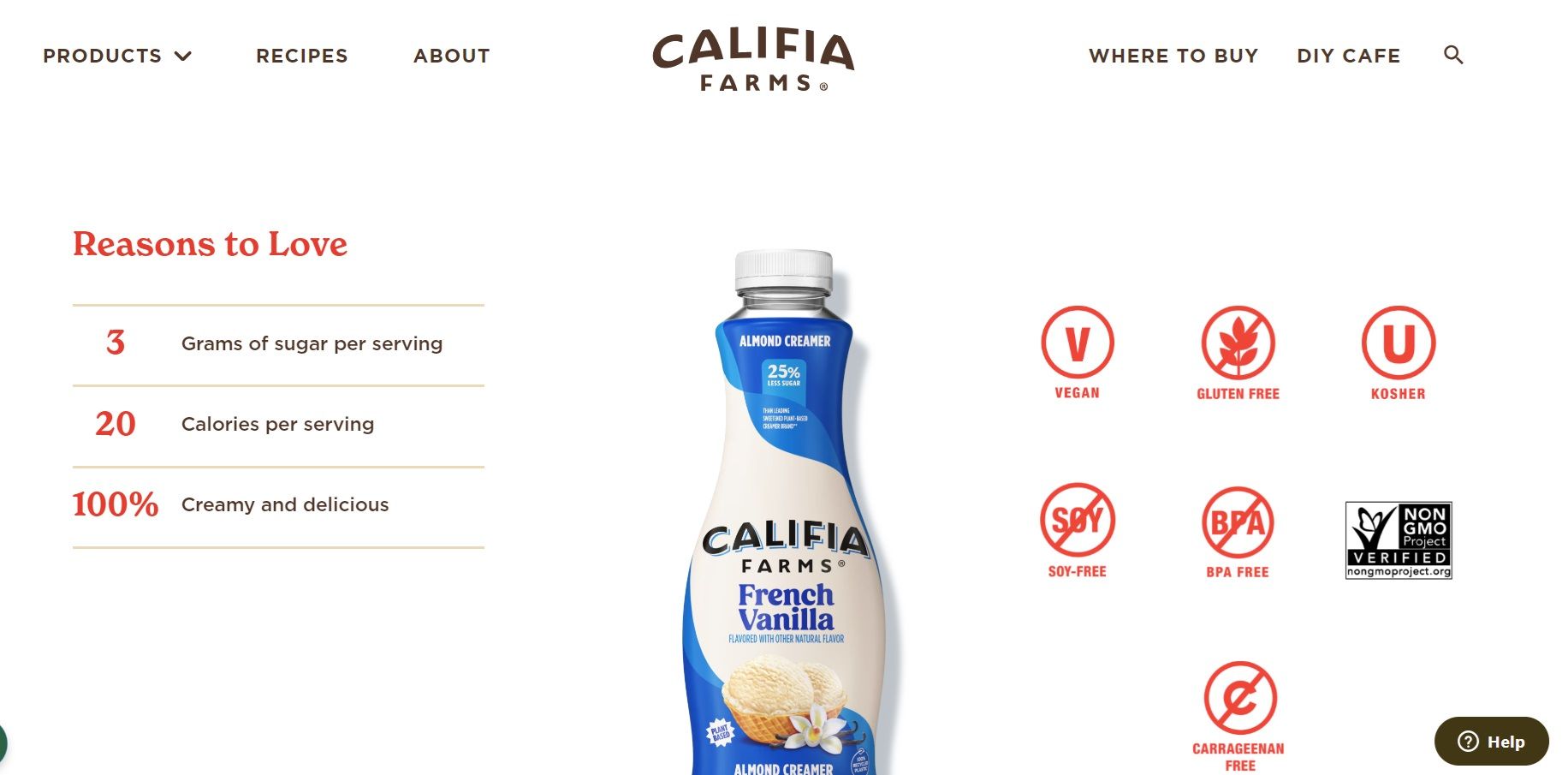
The brand uses small icons to show that its products are vegan, gluten-free, and soy-free.
Users can see how-to-use instructions showcased with 3 images and concise text when they scroll down.
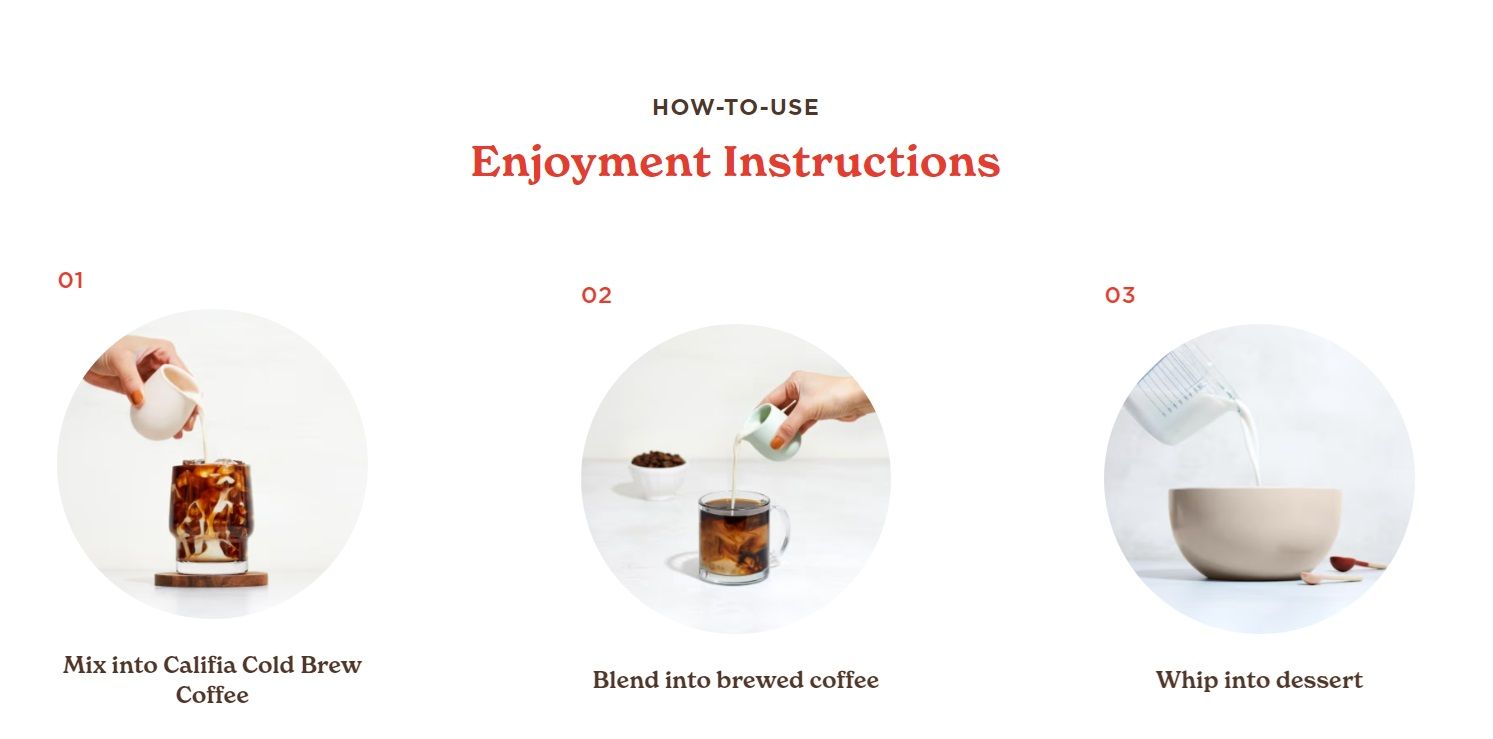
Califia Farms gives consumers all of the information that they need in a visually appealing way.
They have identified that their shoppers care the most about the nutrition facts, ingredients, and possible recipes - and they have shown that with visuals.
Example 6: Long But Concise Descriptions Above The Fold
Not every e-commerce product description can be short and punchy.
Some brands sell products requiring the reader to familiarize themselves with plenty of facts to decide.
In cases like that, the best practice is prioritizing all the information above the fold and making it concise with bullet points.
Amazon Has Seemingly Long Yet Concise Product Descriptions
Amazon understands the value of adding detailed product information for the needed products.
For products like dish racks, Amazon has prioritized all the critical information above the fold and added supporting information below the fold.

💡 Brands like Amazon have optimized their e-commerce conversion funnel by creating concise yet long descriptions.
Users can see the additional "About this item" information when they scroll down.

Example 7: Boutique Style Description
Brands selling luxury products have boutique-style descriptions to reinforce their brand value.
Similar to the story-driven approach, boutique-style product descriptions aim to captivate the minds of consumers and enable them to see themselves using the products.
Common writing styles of boutique-style descriptions include:
- Mentioning how the product inspires consumers to take action.
- How it incorporates into their lifestyle.
- The composition of the products.
- A short history of the product and what makes it special.
When explaining the product's value, more complex language is used, such as ‘’mesmerizing’’ and ‘’exuding’’.
Marketers of premium brands try to help consumers imagine the lifestyle they would lead by purchasing these products.
Luxury Brands Like Chanel Write Boutique-Style Product Descriptions
For fragrance and beauty brands like Chanel, brand perception is everything.
From how they do traditional marketing to how they structure e-commerce product pages, the retailer utilizes boutique-style writing.

The brand discusses the art of perfuming and the fragrance experience of using their product.
Notice how Chanel does not call their perfumes ‘’perfumes’’ but ‘’fragrances’’ because it adds a note of prestige.
The products’ above-the-fold copy is rather simplistic, with nothing more than the product name, price, and size.

Example 8: Pain-Point Description
Another way to approach product descriptions for your online store is to touch on your shoppers’ pain points.
If we assume there are two types of products - painkillers & vitamins, you can use a pain-point description for a painkiller product.
Examples of painkilling products include recovery devices, back pain mattresses, weight loss pills, etc.
You can approach pain-point descriptions with what your shoppers are struggling with and speak directly to these pain points.
For example:
- ‘’Product X helps you get in shape for summer.’’
- ‘’Product X lets you get a good night’s sleep so you can not be tired the next morning.’’
Casper Utilizes Pain-Point Product Descriptions
Casper is an online retailer that sells mattresses.
Instead of over-focusing on features (they also mention them), the brand’s copywriting is centered around helping their customers solve their biggest problem:
Not sleeping properly at night and losing sleep as a result.

The brand then details the mattress’s measurements, dimensions, and warranty.
Example 9: The SEO Description
One of the modern ways to approach product descriptions is to optimize them for search engines like Google.
As 87% of shoppers are now beginning their product search online, more and more retailers have been working on their SEO.
The way it works is that retailers are researching keywords with marketing tools like Semrush to find keywords to optimize their pages.
These keywords are then mentioned in the product title, H1, in-text, and URL.
The Whiskey Exchange Optimizes Its Whisky Pages For SEO
The Whisky Exchange is a whisky re-seller in the UK that has optimized its product pages to rank for transactional keywords.
The brand can rank for keywords like ‘’Johnnie Walker Blue Label’’ and ‘’blended scotch whisky’’ by optimizing its product pages.
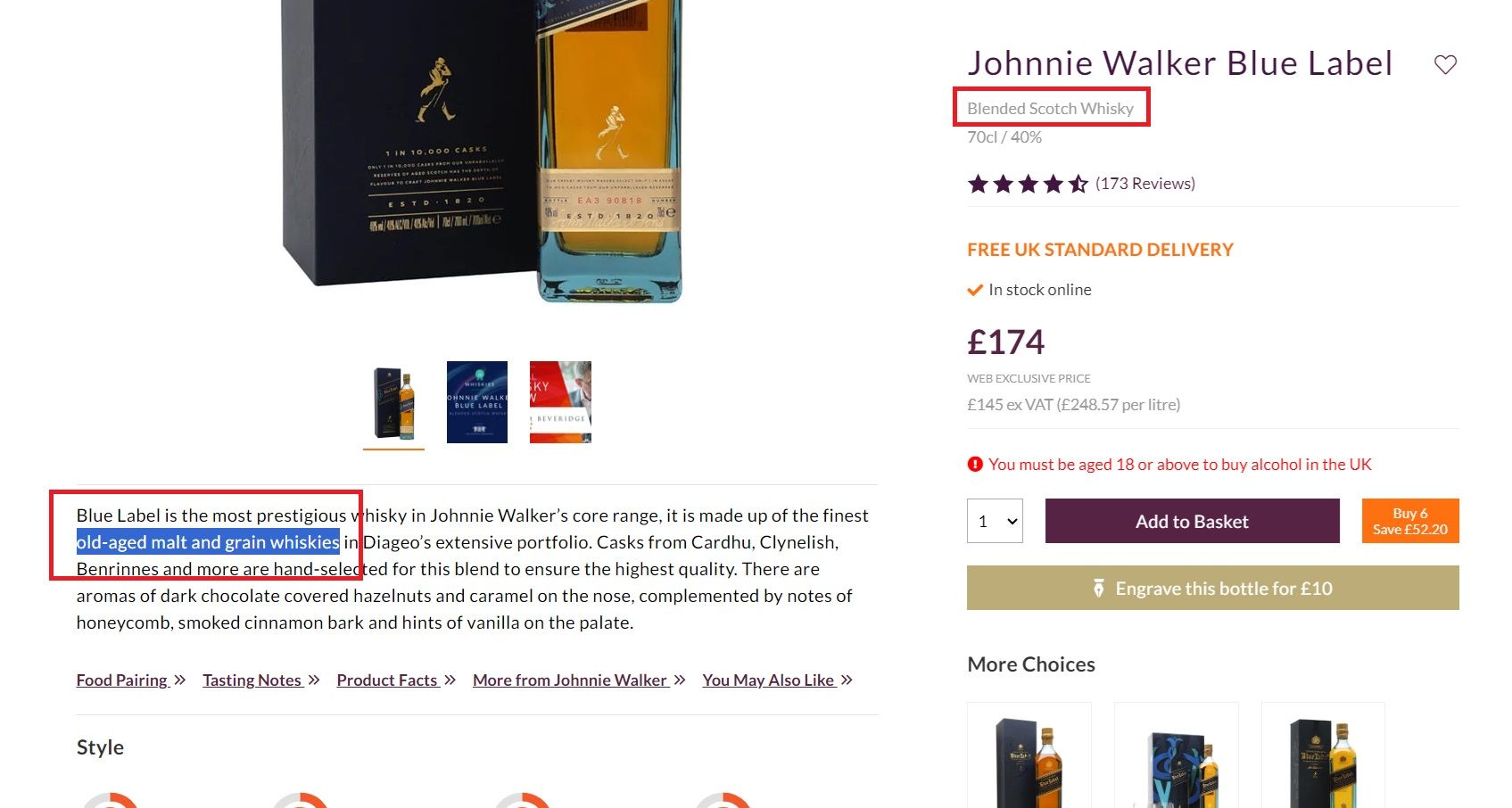
The brand has utilized a keyword-driven approach to write its title, H1, product description, and subsequent text below the fold.
Example 10: Benefits over Features Description
Instead of focusing on your product's technical details and features, you can lead a benefit-driven approach to your product pages.
For this to work, you need to know what your customers value most about your product or what they do to enjoy it the most.
You are trying to establish what makes your product great and different.
Rumpl Approaches Product Descriptions With Benefits Over Features
Rumpl writes short descriptions (or bullet points) that summarize the best benefits of their product.
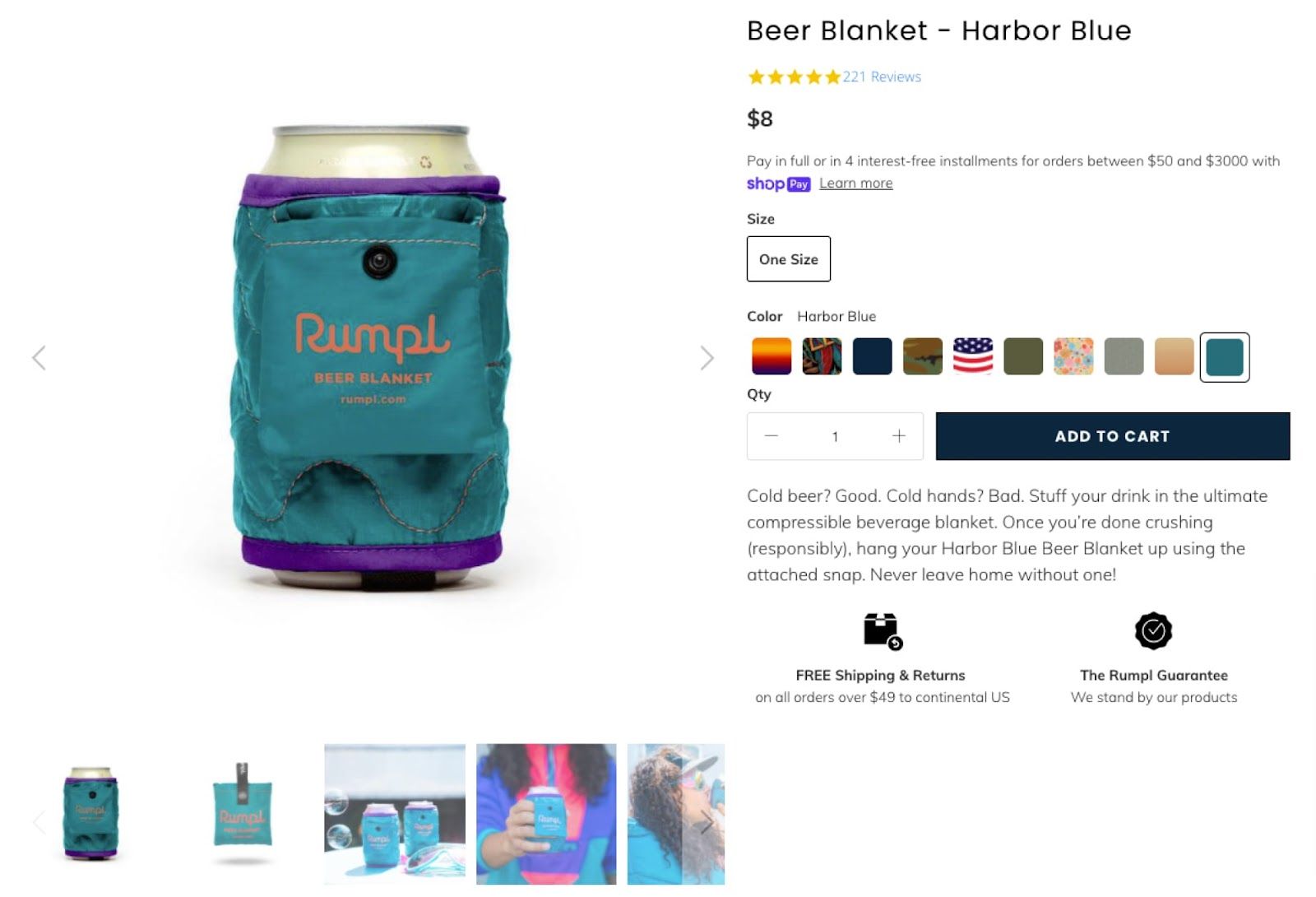
The brand is positioning its beer blanket as part of the beer party, an item you must remember to bring along.
Another approach of Rumpl is to put the benefits in bullet points based on what their consumers value the most:
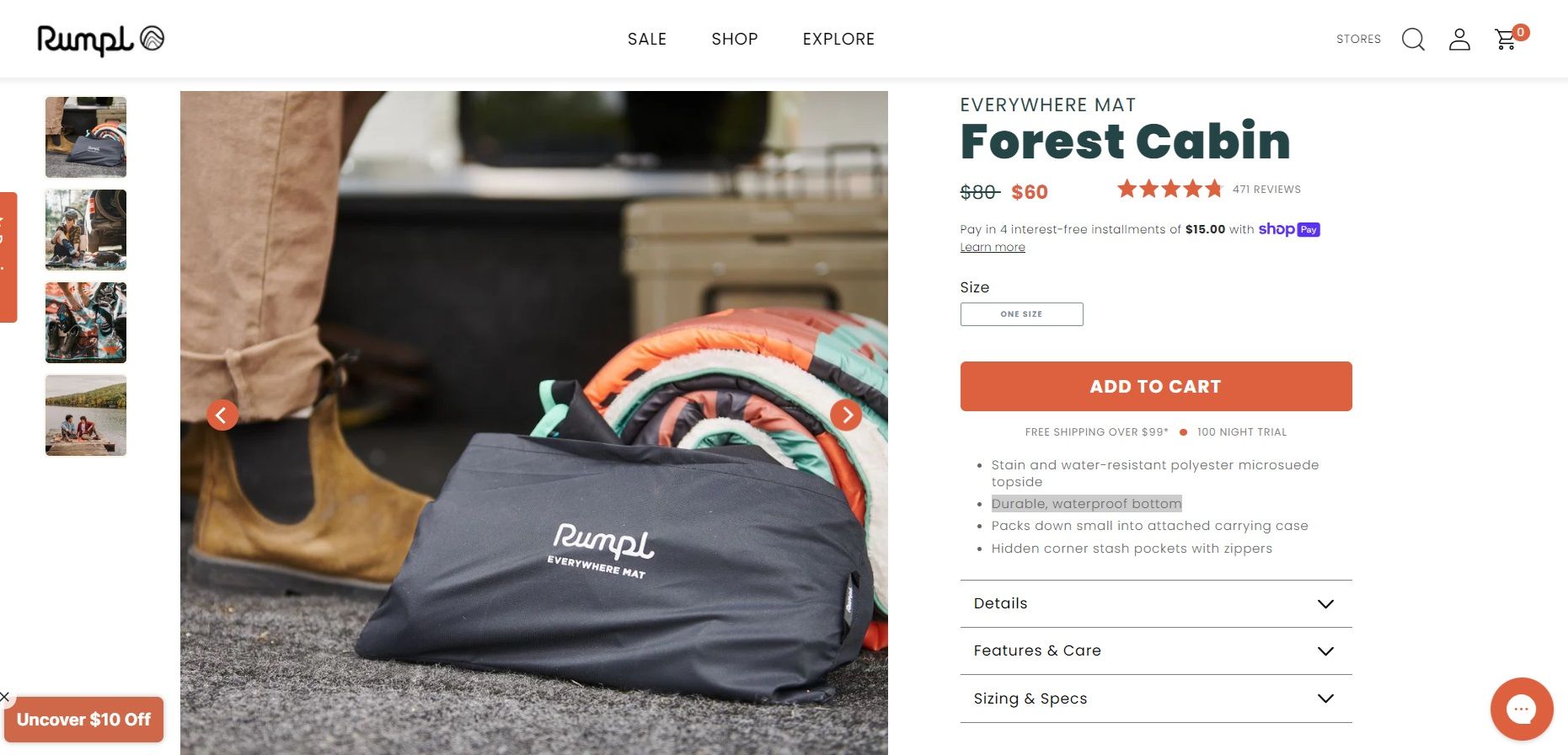
Instead of getting into the details of materials used and sizes, the retailer starts off strong by mentioning its durability, waterproofness, and stain resistance.
How Else is AI Being Used in E-Commerce to Drive Sales?
Check out our AI in e-commerce examples article, which covers 6 case studies of retailers who used AI-powered recommendations and other tools to increase conversion rates.
Optimize Your Product Pages With Big Sur AI’s Personalized Prompts
Big Sur AI is an AI-powered shopping assistant that increases conversion rates by helping customers find the best product for their needs.
The software achieves that via:
- Human-like conversational experience that operates 24/7.
- Conversion-optimized AI prompts.
- Personalized product recommendations.
Apart from the conversational experience and question prompts, you can also improve your store’s product pages with personalized product recommendations.
Our software makes contextual product recommendations based on user behavior and the information gathered through the conversational experience.
Big Sur AI's product suggestions are broken into three modules:
- Picked just for you: Displays a selection of products that a user is most likely to buy based on what the tool knows about them.
- Frequently bought together: These recommendations appear once your shoppers add a product to their cart. This module features other products that customers typically buy based on their previous site activity.
- Top sellers: We show the bestsellers in the same product category as the product your customers are considering.
The software shows products based on the customers' gathered information and not generic recommendations.
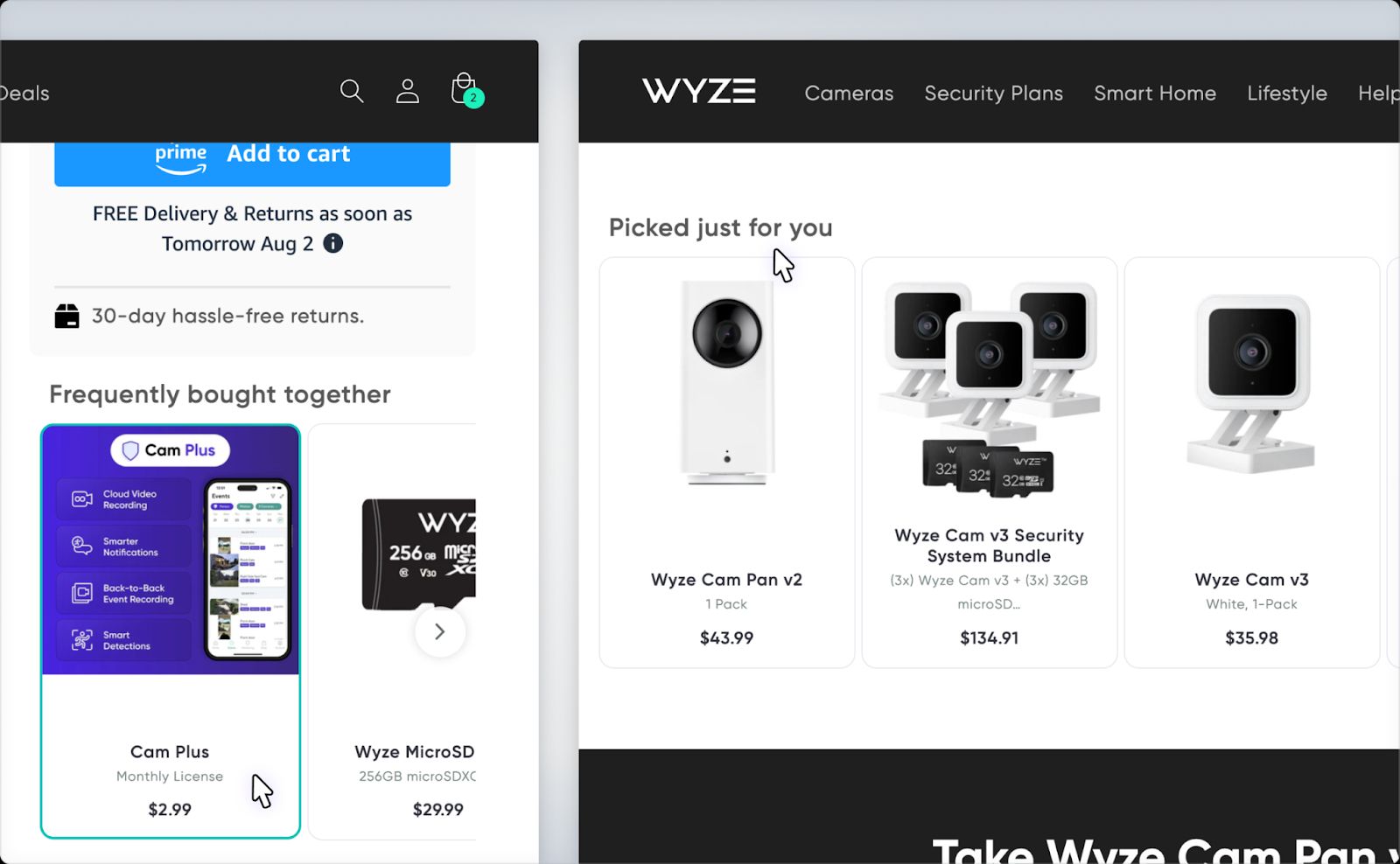
Shoppers can receive these product recommendations on your product pages or during a conversation with the AI Sales Agent, dramatically increasing basket sizes.
Improve your product pages and descriptions by bringing personalized questions to the customers’ browsing experience.
You can increase your basket sizes and revenue by bringing sales assistant-like conversations and AI product recommendations to your online store.
Be data-driven about what pre-purchase questions consumers have on your store to improve your product descriptions and customer journey.


